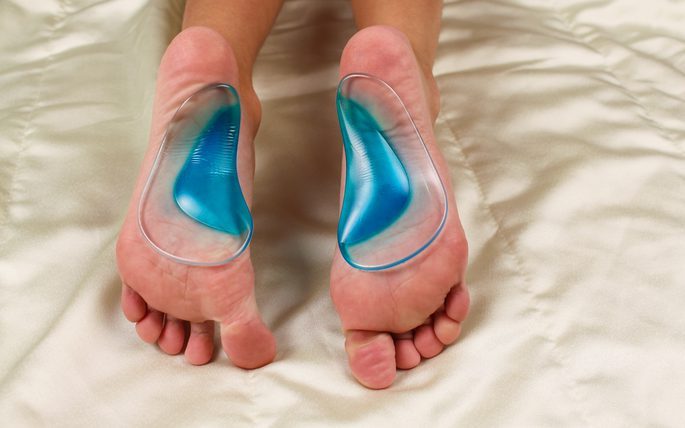Pain in the arches of the foot: Causes and How to relieve it
Pain in the arches of the foot is a common cause of consultation in general medicine and is usually more frequent in children and the elderly. The sole of the foot is formed by an extensive group of small muscles covered by a tissue called plantar fascia. The arch of the foot is responsible for absorbing the shock that occurs when walking or running, maintaining balance, stabilize movement and allow the foot to adapt to changes in the area in which we stroll around.
Any of these muscle groups, the bones of the foot or the fascia itself can be involved in these movements and, therefore, cause pain at that level. Next, we will see what are the causes of pain in the arch of the foot and how to relieve it.
Table of Contents
Inflammatory causes of pain in the arch of the foot
There are four causes of the inflammatory type that can cause pain in the arches of the foot. In order of frequency and importance, they would be:
Plantar fasciitis
The plantar fascia runs from the base of the toes to the heel, and its inflammation is the most common cause of pain in the arches of the foot.
Characteristically, the pain of plantar fasciitis occurs predominantly in the morning and after long walks and may be accompanied by plantar cramps at night.
Tendonitis in the foot
Two large tendons of leg muscles pass through the arches of the foot: the tendon of the tibialis posterior muscle and the peroneal tendons. Both originate on the back of the leg, pass behind the ankle and then the arches of the foot, and are fundamental for extension and abduction movements (take the foot out).
Foot sprain
Each foot has 26 bones, not to mention that there may be natural anatomical alterations. All these bones are joined by a network of ligaments and tendons that turns out to be extremely intricate.
The abrupt turn of the foot or the inappropriate landing when falling can cause the production of sprains of any of them, with the consequent pain, which will be greater the activity.
Stress fractures in the foot
The foot, like the hand, is made up of a large group of small bones that can be affected by excessive activity.
In the case of the bones of the foot, the so-called metatarsals and some other small bones (the navicular, the cuboid, and the cuneiform) can suffer the so-called stress fractures, causing pain at the level of the arches of the foot.
Noninflammatory causes of pain in the arches of the foot
There are two causes that are added to the previous ones, but that do not have an inflammatory component in their production mechanism.
Flat feet
It is the most common cause of pain in the arches of the foot in children. The arc shows flat or completely absent, so its functions are affected.
The final consequence of the flat foot is an overload of work on the muscle groups and the fascia that finally manifests itself in frequent falls and pain.
Axis of the foot
It is a rare cause, but it must be considered. There is an alteration in the normal axis of the foot and, as a consequence, the big toe is directed inwards when walking, also altering the normal work of the arch, with the consequent production of pain and anatomical modification of the rest of the foot to compensate for the deficiency.
How to relieve pain in the arches of the foot
The treatment of pain in the arches of the foot is relatively simple and can be started at home, as long as the painful situation does not worsen.
- Rest: The fundamental principle for the relief of any condition of the foot is to place it at rest and limit its use (walking). This measure, by itself, may be sufficient for the correction of minor conditions that were beginning.
- Local ice: Local ice causes inflammation of tissues that may be involved at the level of the arch of the foot and contributes to the reduction of pain.
- Analgesics or anti-inflammatories: These fulfill the function of complementing the two previous measures, accelerating the recovery process.
- Modifications in footwear: It is essential to use footwear that has an anatomical arch and that is padded, to facilitate the function of the foot arch and prevent injuries at that level.
- Medical treatments: In rare cases should be considered surgery (fasciotomy, tenotomy, etc.) for the correction of foot arch pain.
If, in spite of the above measures, the pain persists or increases, you should immediately consult your doctor to carry out the corresponding studies and decide if you need additional measures to eliminate this annoying problem.

